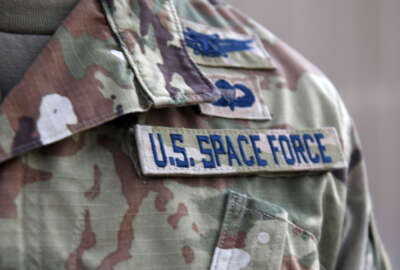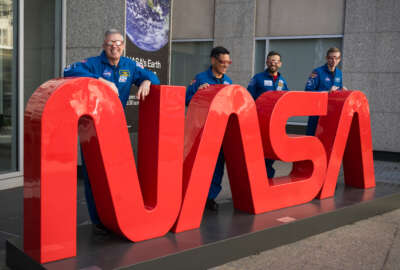This company is helping government satellite operators improve awareness of threats in low-earth orbit
An academic course endorsed by the Defense Department and delivered by accelerator company BMNT aims to help science and engineering students.
An academic course endorsed by the Defense Department and delivered by accelerator company, BMNT aims to help science and engineering students develop their ideas in two companies. It’s called Hacking for Defense. One resulting startup called Pharos aerospace hopes to help both defense and commercial satellite operators deal with space debris. For more, the Space Hour spoke with former University of Chicago students, Victor Tyne and Brian Klein.
Interview transcript:
Victor Tyne
We took the course the Booth School of Business at the University of Chicago, we were a team of students, a team of five students at the time. And we were interested in learning about what a dual use architecture was, and what it meant to do innovation in the defense space. And we did exactly that, we learned a lot about what that looks like. The correspond to a lot of different problems across a lot of different kinds of problem spaces. And we were actually sponsored by the Missile Defense Agency to tackle challenges to secure communication for missile defense systems. And we started pulling strings and thinking about what specific problem can be addressed, whether the one in the original problem statement or not. And we ended up realizing kind of the importance of satellite to ground communications for these kinds of systems, and thinking about what the threats were to that. We identified debris, specifically lethal non trackable debris in low Earth orbit, and then also just unidentified residence based objects, whether any satellite weapons or otherwise as a real threat to secure communication. So we started thinking about what are the gaps in current technology? And how can we address that.Tom Temin
Sounds like you’re focused on the physical destruction or capability of debris, as opposed to jamming and signal interference, that type of thing.Victor Tyne
problems that was more focused on the cybersecurity kind of problem, and we pivoted at some point in the course toward a real physical threat.Tom Temin
What do you major in? What were you guys studying that you were interested in this particular area, Brian.Brian Klein
Victor and myself have a physics background. So Victor is studying physics, I was a physics major at the University of Chicago in the past, and then latest degree is business, also have another MBA.Tom Temin
Unlike I guess, some people of your generation, you have an interest in national defense and warfare and helping the country in that manner.Victor Tyne
I think that I was one of the main motivations for taking the course. And it’s been really interesting going through this process and getting to talk to stakeholders and find out what the challenges they face are and why they’re interested in this kind of technology. I think it’s largely an interest in national defense. But it’s also an interest in just the common good of our planet, the ability to continue having secure satellite communications to continue providing GPS service, all these things that are threatened by things like small lethal non trackable debris, or any satellite weapons in low Earth orbit. So I think it’s a really important issue for National Security, but also just for the common good of how we do things in the 21st century.Tom Temin
So that’s the dual architecture idea that it serves both civil and military interests.Victor Tyne
We’ve also found to a large degree, government agencies like the Space Force already doing a lot out of general public interest. And in addition to their National Security effort, that’s been really interesting to learn about and collaborate with.Tom Temin
And what happened when you completed the course? You were selected for something. And there’s teams from several universities, what happens next? They liked your ideas, tell us about the process.Brian Klein
Two things happened when we completed the course. The first was we were selected for the University of Chicago’s New Venture Challenge program. So that’s a major, maybe the biggest university accelerator in the country, if not the world, and that accelerator focuses on consumer applications. So we really got to phone our business and our idea from the lens of providing services to consumer companies, but we’re therapy imaging companies, that sort of thing through that program, which is really good ended up placing six out of over 80 teams in that. They liked us too apparently. The other side was we got into the H Rex program. So H 4x is a direct continuation of hacking for defense. And that program focuses much more strongly on dual use technology, on working with government, on learning how to not just do things the government way, but also making connections in the government. And that been a great compliment to us to the NBC focus on consumer sites. And now we’re getting to really learn about running a business not just focusing on consumer, but also focus on government clients.Tom Temin
Yeah I guess if you can navigate government contracting, you can certainly solve the problem of space debris. I don’t know which one is more difficult to overcome. But in that regard, you mentioned Victor the idea of lethal non trackable. If it’s non trackable, I guess maybe give us a basic foundation on what some possible solutions to lethal debris might be if you can’t track it.Victor Tyne
Lethal trackable debris is lethal, but currently non trackable. And there are workarounds and solutions to that. This debris is non trackable from the ground with ground radar, because there are limits on the ability to see things from such a distance. And with atmospheric interference. There’s been a big push toward imaging in space of debris tick track, to try to be be able to see what’s historically been lethal and non trackable. And our approach is to do this, but to an unprecedented level in a distributed way. So leveraging technology that’s on a lot of satellites, specifically cameras that a lot of satellites use for other purposes, to track when small pieces of debris enter their field of vision, analyze its position and velocity, get information about where it is and what it is, and record that and keep a database of all this debris. And the reason we’re able to do this on such a large scale is because we’re tapping into cameras that are already on orbit throughout low earth orbit, rather than trying to send up hundreds, if not thousands of new cameras to try to see what we currently can’t.Tom Temin
Launching clouds of new satellites, just for that purpose, in a sense, increases the risk, because when you let out a cluster of satellites, they don’t all make it. And some of them might turn into the debris that you’re trying to track.Victor Tyne
And it’s also a huge cost. And it would be extremely costly to launch a large number of satellites, especially with the technology required to do this.Tom Temin
So it sounds like it’s essentially a software approach, then because the hardware is already in space. And it’s a matter of programming what those cameras are doing to do something else.Victor Tyne
Exactly. A software problem and a data problem of aggregating data that is either not currently being saved or not currently being collected and making it useful.Tom Temin
And by the way, is it always imagery within the human visual spectrum, or are there other areas of the spectrum where because these things are small and moving so fast, they can be detected other than visually?Victor Tyne
That’s a great question. These pieces of debris can be detected with radar and lidar and other things outside of the optical regime. In fact, one of the main ways debris is currently tracked is from the ground with radar. The reason we’re working with optical sensing in space is because those are the cameras that are currently widely used. And they actually do a very good job of seeing what we want to see. And some of these other methods like LiDAR, for example, doesn’t do as well with the distances that we’re working with.Tom Temin
And getting back to the business side of it, are you accompany yet? And do you have a plan to make a company that could actually sell this technology to the Pentagon, as well as to commercial operators in space.Brian Klein
We are a company, we’re incorporated. And we are working on making those connections to not just the Pentagon and other agencies but also commercial providers to that a lot of discussions with providers on what would make the technology interesting for them what they need to be interested in. And now we’re going to be doing the same with government agencies to the ATREX program.
Copyright © 2025 Federal News Network. All rights reserved. This website is not intended for users located within the European Economic Area.
Eric White is news anchor and Federal Drive producer at Federal News Network.
Follow @FEDERALNEWSCAST






